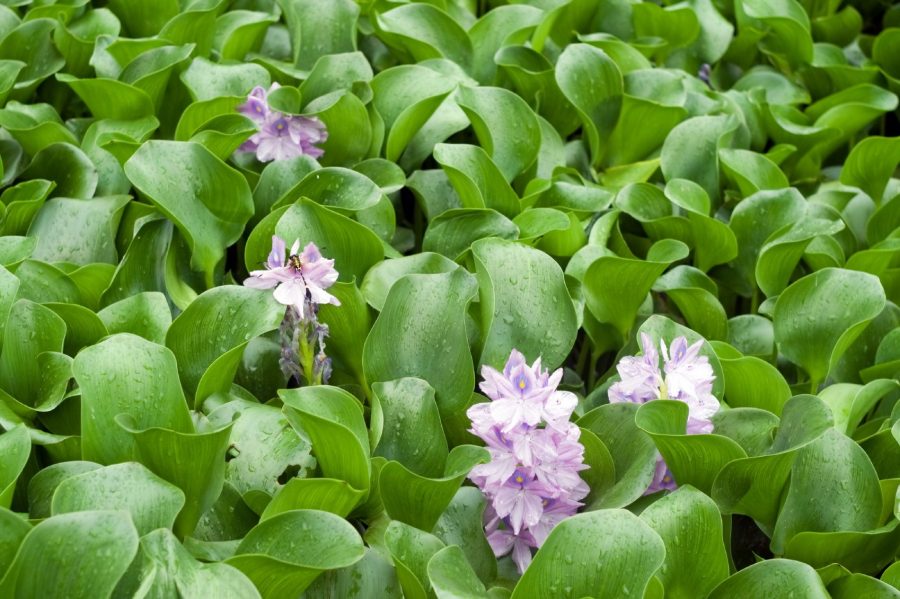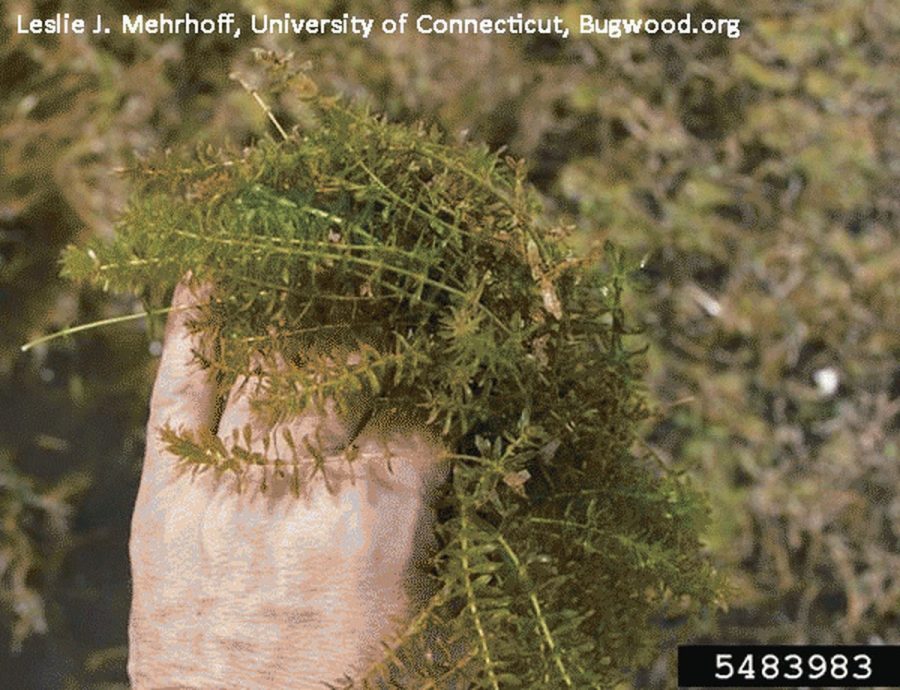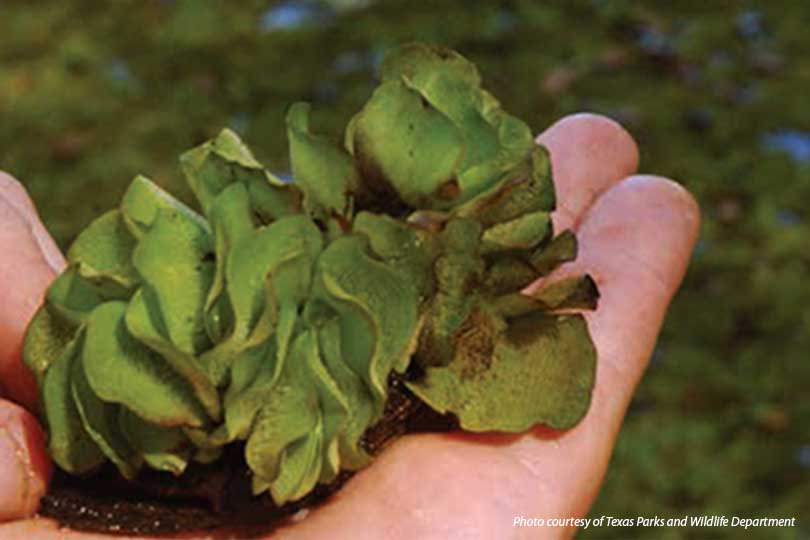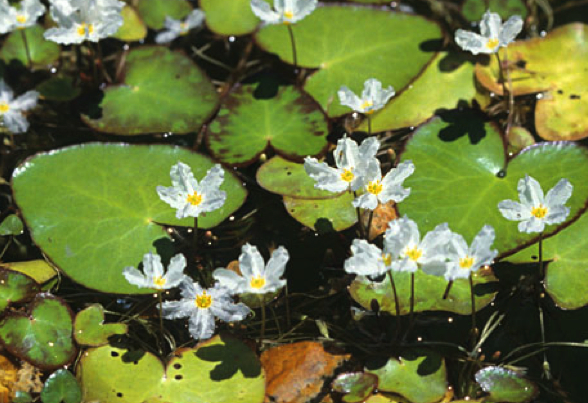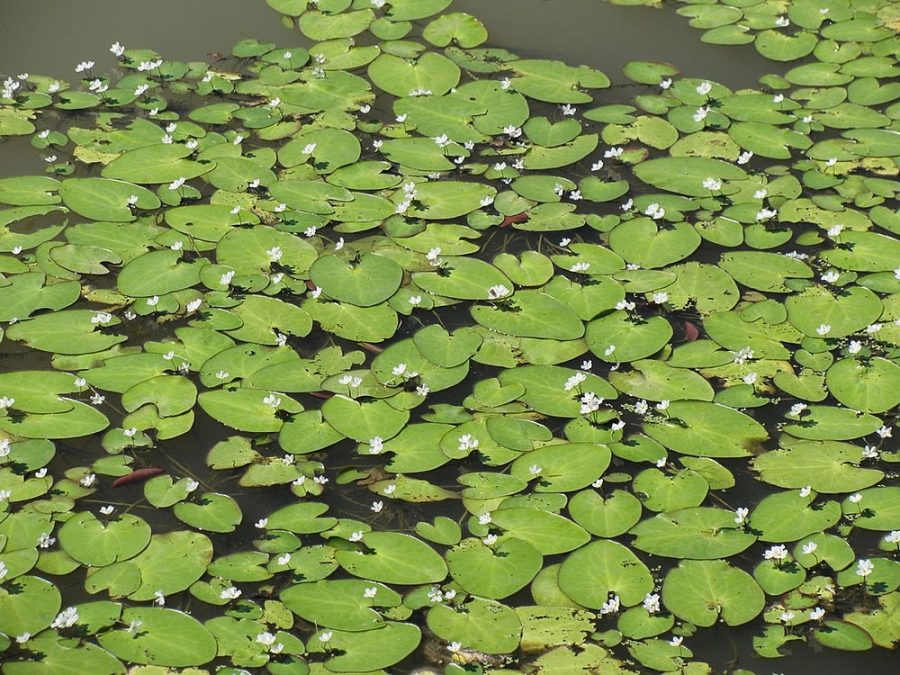There are numerous ways in which invasive plants can get introduced into a body of water. The most common way for this to happen is when a boat that was not properly cleaned, drained, and dried travels from an infested lake to a non-infested lake. Just like the zebra mussel, plants are simply transported via boat and trailer from one lake to the other.
Another common way in which non-native plants are introduced to a lake is through the aquarium or water garden industries. Unfortunately, many invasive species are actually quite beautiful to look at and, though illegal to possess, are relatively easy to purchase. Finding plants to stock these outdoor features is often as easy as a few clicks on the internet. There are many ways that garden plants can end up in a local body of water. Often it’s through disposal, but they can also be carried by animals such as birds and reptiles or rising waters during a storm.
Crested Floating Heart
Recently, a fourth invasive plant known as Crested Floating Heart has been identified in Lake Conroe. This is a rooted plant with heart-shaped leaves that float on the water’s surface. The plant was first identified on Lake Conroe in the headwaters of Little Lake Creek.

In the aquatic plant management world, the ability to positively identify plants is the single most important skill a manager can have. One must be able to distinguish between native plants and non-native plants at any time of season.
In the case of Crested Floating Heart, this can prove to be a challenge as many native plants resemble Crested Floating Heart. In particular, Banana Lily, a plant native to the Southeast United States, can easily be mistaken for Crested Floating Heart. One of the key indicators that allows aquatic plant managers to positively identify Crested Floating Heart is the distinct ridge that runs down the middle of its leaf petals.

Fortunately, this plant has been positively identified and treatment has already started. The plant was identified on October 30, 2018, and technicians from the TPWD were on Lake Conroe on November 2, 2018, making the initial treatment applications. The treatment of choice is a relatively new herbicide that is safe for the environment and poses no threat to public safety, yet is highly effective on this invasive plant. Only specially-trained applicators are permited to purchase and apply this new product. Technicians with SJRA, in addition to local area contractors, are scheduling to be trained on this product, so that they too can join in the fight.
Erradicating an invasive plant like Crested Floating Heart is usually not possible on a body of water as large as Lake Conroe, but that is the goal of our efforts. What is more likely is that this plant will become a regular part of the on-going aquatic plant maintenance program for Lake Conroe.
Finally, a special warning to boaters. One of several ways that this plant can reproduce is through fragmentation. This means that if a piece of the plant is broken off by a boat propeller or some other means, it can float away and reestablish as an entirely new plant. For this reason, boaters and recreational enthusists on Lake Conroe should take special precaution not to damage plants if they see them. To learn more about this plant please visit:
https://www.texasinvasives.org/plant_database/detail.php?symbol=NYCR
